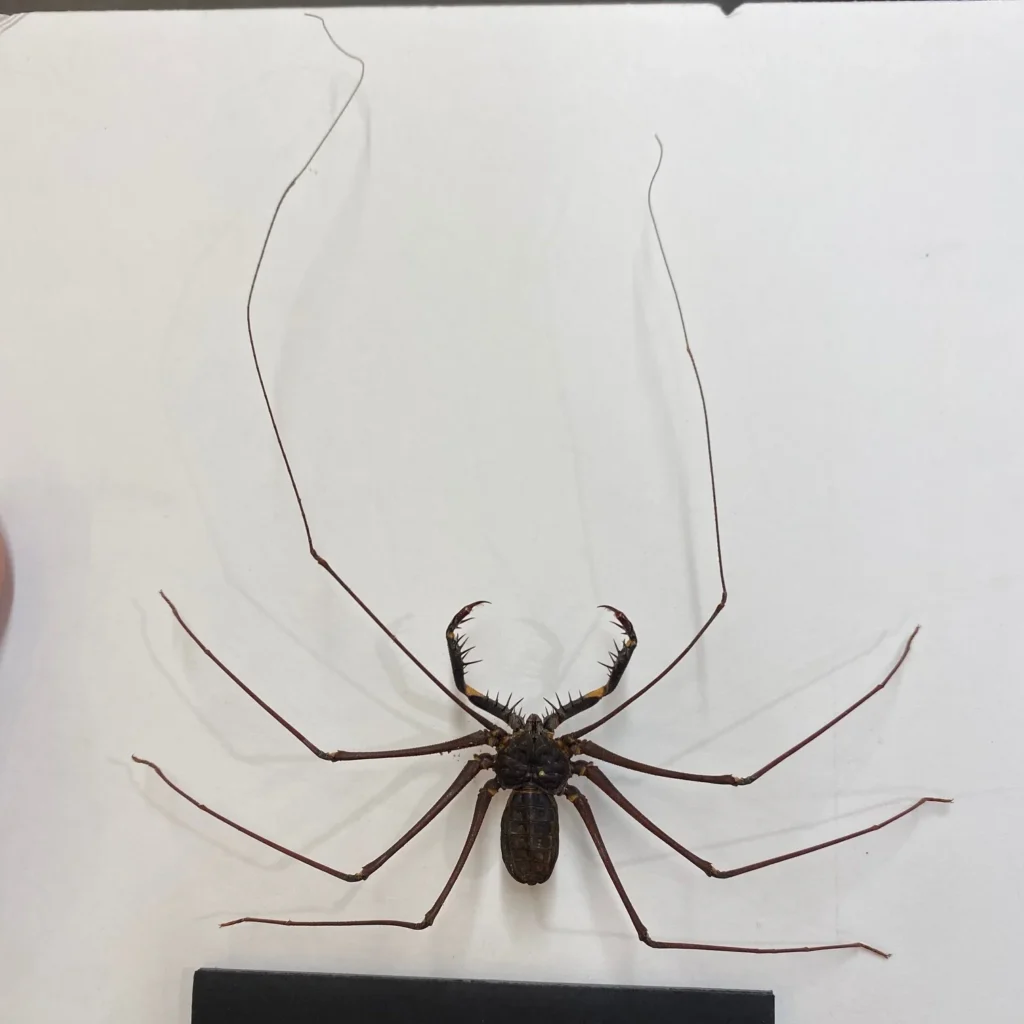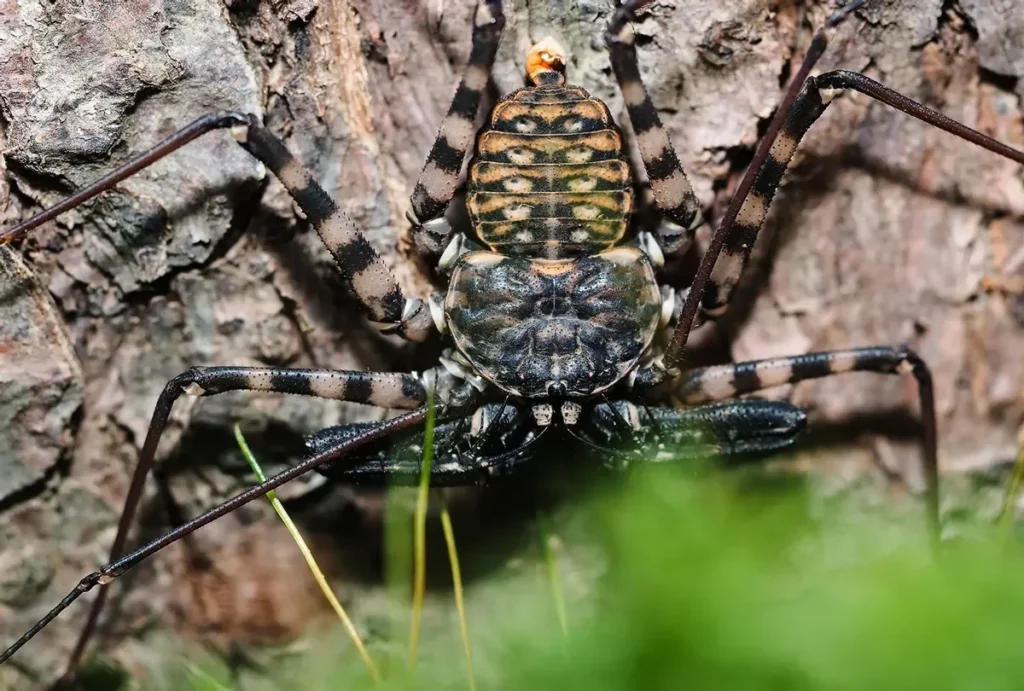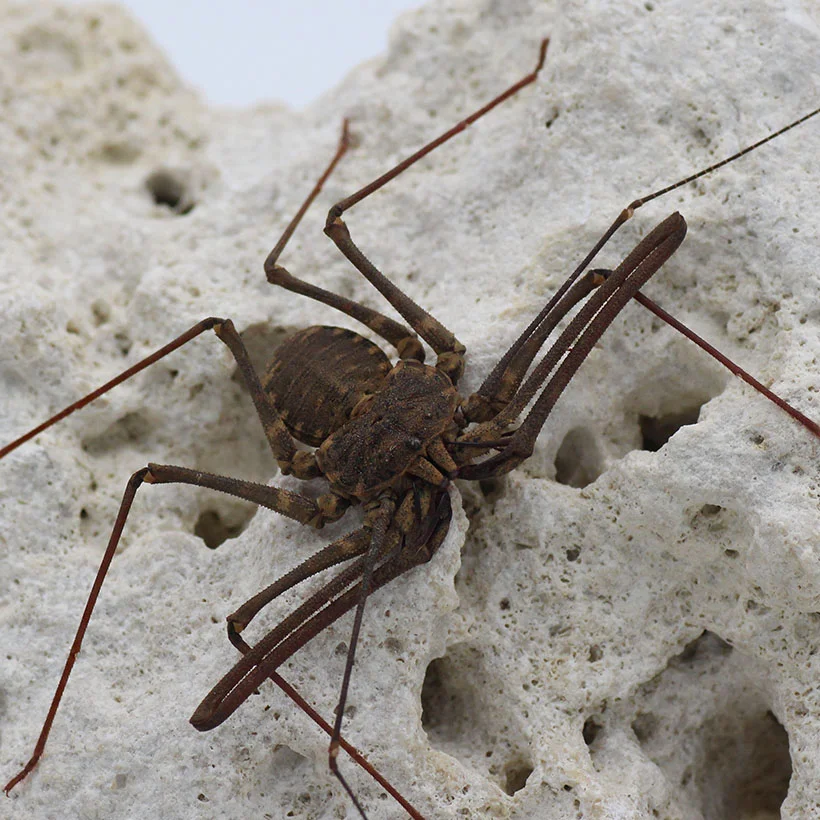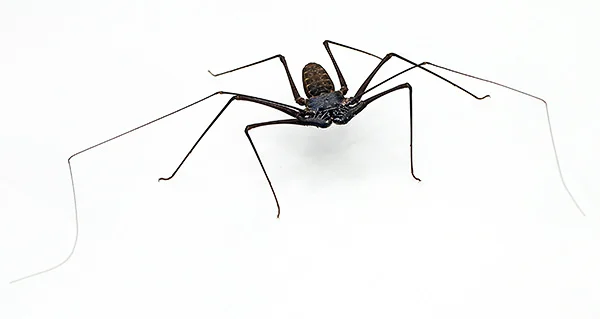How Whip Spiders Sense and Explore Their Environment
The whip spider, scientifically known as Amblypygi, is one of the most intriguing and misunderstood creatures in the arachnid family. Despite their name, whip spiders aren’t true spiders, but they share many characteristics with spiders and scorpions. Their extraordinary appearance and unique behavior make them a fascinating subject for enthusiasts and researchers alike.
What Does a Whip Spider Look Like?
The flat, oval body of a whip spider usually measures between 2 and 8 cm. Their flattened physique allows them to hide in narrow crevices, under rocks, and other tight spaces. Most spiders come in shades of brown, black, or grey, with patterns that vary depending on the species. These patterns can help them blend into their environment, providing excellent camouflage from predators.
Their Long Legs: A Defining Trait
One of the most striking features of a whip spider is its incredibly long legs. These legs, often far longer than their body, are thin yet strong, allowing them to navigate their surroundings with agility. The legs are covered with spines that aid in climbing and clinging to surfaces, such as rocks or tree bark. This impressive adaptation is crucial for both movement and hunting.
Whip Spider Flagella: An Extra Set of Senses
In addition to their legs, whip spiders possess unique antenna-like structures called flagella. These long, thin appendages can grow up to three times the length of their body, acting as highly sensitive sensory tools. Covered with fine hairs, the flagella allow spiders to feel their way around their environment, detecting nearby objects, movement, and prey. This heightened sense of touch compensates for their relatively poor eyesight.

How Whip Spiders “See” Their World
Despite having eight tiny eyes in three different groups on their head, whip spiders don’t have very good eyesight. Instead, they rely heavily on their flagella to navigate their surroundings. These sensory appendages act as their primary means of “seeing,” enabling them to detect vibrations and movements in their environment.
A Creature Unlike Any Other
With their flat bodies, long legs, and specialized flagella, whip spiders stand out as some of the most unusual creatures in the arachnid world. Their striking physical traits and unique behaviors set them apart from more commonly known spiders and scorpions. For anyone lucky enough to encounter one, the spider offers a glimpse into the extraordinary diversity of the animal kingdom.
Adaptability of Whip Spiders: Mastering Diverse Habitats
Whip spiders (Amblypygi) are native to various regions worldwide and exhibit an incredible ability to thrive in different environments. From dense rainforests to arid deserts, and even bustling urban areas, spiders have successfully adapted to a range of habitats.
Where Do Whip Spiders Live?
Unlike traditional spiders, whip spiders do not spin webs. Instead, they seek shelter in crevices, caves, or under rocks, where they can hide from predators and shield themselves from environmental elements. Their flat bodies enable them to squeeze into tight spaces, making them well-suited for these locations. spiders are also excellent climbers, often scaling trees and plants, using their long legs to cling to branches as they search for food or shelter.
Nocturnal Habits and Feeding Behavior
Whip spiders are nocturnal creatures, spending most of the day hidden in their shelters. As night falls, they become active, emerging from their hiding spots to hunt and explore their surroundings. While moving, they use their long, sensitive flagella to scan their environment, helping them detect nearby prey.
Whip spiders thrive in humid environments and are commonly found near water bodies such as rivers, lakes, and wetlands. They often seek out the moisture and coolness offered by these areas. In rainforests, spiders hide under leaves and plant debris, where they find abundant prey and protection.
Adapting to Dry Environments
Despite their preference for moisture, whip spiders are also capable of surviving in dry, arid regions. In deserts, they adapt by residing in caves, cracks, or crevices that provide relief from the extreme heat and sunlight. Their ability to withstand long periods without water highlights their remarkable adaptability.
Overall, the whip spider’s evolutionary journey has equipped it with the skills needed to colonize a variety of habitats. Whether in humid forests or dry deserts, spiders continue to demonstrate their resilience and flexibility.
Hunting Without Venom: The Unique Hunting Methods of Whip Spiders
Whip spiders have developed fascinating hunting techniques that distinguish them from other arachnids. Unlike many spiders, spiders lack both venom and the ability to spin webs. As a result, they have had to evolve alternative strategies to capture their prey.
How Whip Spiders Hunt
Whip spiders are active hunters that primarily feed on insects and other invertebrates. To locate prey, they extend their long flagella in front of them, using the highly sensitive hairs on the flagella to detect movement in their surroundings. Once they identify a target, they move quickly, often sprinting toward the prey and seizing it with their powerful pedipalps.
Even without venom, whip spiders are formidable hunters. They can capture prey before it has a chance to flee thanks to their speed and agility. These adaptations also help spiders evade predators, making them fast and elusive.

Masters of the Hunt: How Whip Spiders Capture Their Prey
Whip spiders, also known as Amblypygi, are expert hunters that primarily feed on insects and other small invertebrates. Their diet includes a wide variety of prey, such as flies, moths, beetles, grasshoppers, and even other spiders. spiders consume their prey in full, devouring the soft tissues and fluids, while leaving behind the harder parts like wings and legs.
A High-Energy Predator
Whip spiders have a significant energy requirement and must feed regularly to maintain their activity levels. They are fast-moving creatures, capable of swiftly pursuing and capturing a wide range of prey. Their ability to adapt to different types and sizes of prey makes them successful hunters in various habitats, from rainforests to deserts.
These fascinating arachnids are essential members of the ecosystem, contributing to pest control and maintaining the balance of nature. Although they are not harmful to humans, spiders play a vital role in managing insect populations in the environments they inhabit.
Whip Spider Reproduction: Secrets of Brood Care
Whip spiders are unique not only for their hunting abilities but also for their reproductive behavior. The species lays eggs, and the female takes on the responsibility of brood care. Mating begins with the male performing an elaborate courtship display to attract and impress the female. Once mating occurs, the female produces several egg sacs, each containing between 20 and 100 eggs, depending on the species and environmental factors.
Caring for the Eggs
The female whip spider is a dedicated mother, carrying the egg sacs with her to ensure the eggs remain protected in a warm and humid environment. She covers the eggs with her body to guard them against predators and environmental hazards during the incubation period, which lasts between two and eight weeks depending on temperature.
Once the young whip spiders hatch, they stay with their mother for a short time, relying on her for protection. The mother aids the young with molting and helps them learn how to hunt during this time. When they are mature enough to fend for themselves, the juveniles leave to begin their independent lives.
This process of brood care ensures the survival of whip spider offspring, allowing them to thrive in diverse habitats and continue their role in the ecosystem.
Terrarium Care for Whip Spiders: What You Need to Know
If you’re considering keeping a whip spider in a terrarium, it’s crucial to understand their specific care needs to provide them with a suitable environment. Here’s how to create an optimal habitat for whip spiders in captivity:
Terrarium Size and Setup
A terrarium measuring approximately 30 x 30 x 30 cm is ideal for housing whip spiders. A larger space will allow for additional hiding spots and more natural decorations. Since spiders can be kept in groups, a larger terrarium is especially beneficial for accommodating multiple individuals.
To recreate their natural habitat, the substrate should consist of a mix of forest humus and Sphagnum moss. This combination helps maintain high humidity, which is essential for whip spiders. A substrate layer between 7 to 10 cm is recommended to retain moisture. Regularly check and moisten the substrate as needed to ensure proper humidity levels. Introducing springtails and isopods into the terrarium can help dispose of organic waste and provide an additional food source for the whip spider.
Maintaining Humidity and Temperature
Whip spiders require a humid environment, with humidity levels between 60% and 80%, depending on the species. A hygrometer can help monitor humidity levels in the terrarium. Spraying the enclosure regularly and keeping the substrate moist are effective ways to maintain adequate humidity.
As for temperature, spiders thrive in a range of 22°C to 28°C. It’s important to place the terrarium away from direct sunlight and drafts. A heat lamp can help regulate the temperature if needed, though UV-A and UV-B lighting is unnecessary for whip spiders.
Hiding Places and Water Access
Whip spiders need plenty of hiding places in their terrarium to feel safe. You can create these spaces by adding live plants, artificial decorations, caves, or cork tubes. This is especially important if you are housing multiple spiders, as adequate hiding spots will reduce the risk of conflict between them. A shallow water dish should also be placed in the terrarium to provide drinking water.
A Long-Lived Companion
With proper care and attention, whip spiders can live a long and healthy life of 7 to 10 years in captivity. Their unique behavior and adaptability make them fascinating pets for enthusiasts willing to meet their specific needs.

Whip Spider: The African Cave Spider Explained
The whip spider, also known as the African cave spider, is a remarkable yet intimidating-looking arachnid that belongs to the scorpion family. These creatures are known for their long, slender legs and unique whip-like front appendages, which give them their name. They also have specialized raptorial pedipalps—claw-like structures that help them capture prey efficiently. The whip spider’s first two legs function as sensory organs, covered in olfactory nerves that assist in navigation, hunting, and mating.
Adapted to Tight Spaces
Whip spiders possess flattened bodies, which allow them to hide in narrow crevices, such as beneath tree bark or between rocks. While they are commonly found in caves, they are not limited to Africa alone. They belong to the phylum Arthropoda and the order Amblypygi, placing them in close relation to spiders, although they have significant differences.
Is It a Spider with Claws?
Despite the “whip spider” name, this arachnid is more closely related to scorpions than true spiders. The claw-like appendages seen on a whip spider are actually modified mouthparts, not the same as spider claws. These spiny pedipalps are an extension of the jaws and are used to seize prey, making them highly efficient hunters. Unlike true spiders, spiders walk on three pairs of legs, using their front pair of elongated appendages for sensory purposes rather than locomotion.
Can a Whip Spider Bite?
While whip spiders may look menacing, they pose minimal threat to humans. Though they possess powerful pedipalps capable of biting or drawing blood, they lack venom glands. Whip spiders are not aggressive and prefer to flee from danger rather than confront it. If a bite does occur, it is usually due to accidental handling. In such cases, basic first aid—cleaning, disinfecting, and bandaging the wound—should suffice for treatment.
Conclusion
In conclusion, the whip spider, or African cave spider, is a fascinating and unique arachnid that often gets mistaken for more dangerous creatures. Despite their intimidating appearance, whip spiders are harmless to humans and play a vital role in maintaining ecological balance by controlling insect populations. Their specialized adaptations, such as whip-like sensory legs and powerful pedipalps, make them efficient hunters in a variety of environments. Understanding these remarkable creatures helps dispel myths and highlights their importance in the natural world.
FAQs
1. What is a whip spider?
A whip spider, also known as an African cave spider, is an arachnid closely related to scorpions. It has long, whip-like front legs used for sensing its environment and raptorial pedipalps for capturing prey.
2. Are whip spiders dangerous to humans?
No, whip spiders are not dangerous to humans. They do not have venom glands and are generally non-aggressive. Although they can bite with their pedipalps, such incidents are rare, and the bite is not harmful.
3. Do whip spiders have venom?
No, whip spiders do not possess venom glands. They capture prey using their pedipalps but rely on their physical strength rather than venom to subdue their prey.
4. Where do whip spiders live?
Whip spiders can be found in various environments, including caves, forests, and crevices under rocks. While they are commonly known as African cave spiders, they are not exclusive to Africa and can be found in other parts of the world.
5. How do whip spiders hunt?
Whip spiders are nocturnal hunters that rely on their long, sensory legs to detect prey. Once they locate their target, they use their powerful pedipalps to seize and immobilize it.
For Getting More Information Thezvideo.




